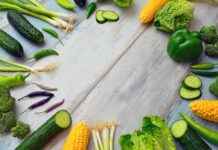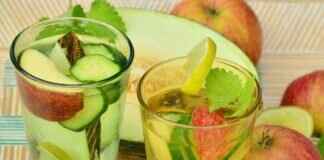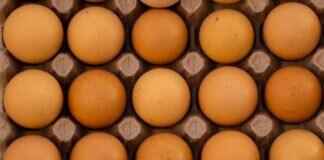Chia seed pudding is not just a trendy dessert; it’s a nutritional powerhouse that can easily fit into any meal plan. This article serves as a comprehensive guide for making delicious chia seed pudding, highlighting its health benefits, preparation methods, and creative variations to suit your unique taste.
Chia seeds are tiny, yet mighty superfoods. These nutrient-dense seeds are packed with omega-3 fatty acids, antioxidants, fiber, and protein. Just two tablespoons of chia seeds contain:
- 5 grams of protein
- 10 grams of fiber
- Rich sources of calcium, magnesium, and iron
This impressive nutritional profile makes chia seeds an excellent addition to your diet, promoting heart health, aiding digestion, and supporting weight management.
Chia seed pudding is a versatile dish that offers numerous health benefits. It serves as a nutritious breakfast, snack, or dessert option, perfect for health-conscious individuals. Its unique gel-like consistency, achieved when chia seeds absorb liquid, makes it both satisfying and filling.
Making basic chia seed pudding is simple and requires minimal ingredients. The classic recipe involves:
- 1/4 cup chia seeds
- 1 cup milk (dairy or plant-based)
- 1-2 tablespoons sweetener (like honey or maple syrup)
Mix these ingredients in a bowl or jar, stir well, and let it sit for at least 2 hours or overnight in the refrigerator for best results.
Chia seed pudding can be customized with various flavors. Here are some popular ideas:
- Fruit-Infused Chia Seed Pudding: Incorporate fruits like berries, mango, or banana to add natural sweetness and vibrant flavors.
- Chocolate Chia Seed Pudding: For chocolate lovers, adding cocoa powder or melted chocolate creates a rich and indulgent treat.
- Spiced Variations: Experiment with spices like cinnamon or vanilla extract for an extra flavor kick.
Yes, chia seed pudding can be stored in the refrigerator for up to five days. Proper storage ensures freshness and convenience for busy individuals. To maintain flavor and texture, store chia seed pudding in an airtight container.
While chia seeds are generally safe, some individuals may experience digestive discomfort. To prevent any issues, it’s important to:
- Consume chia seeds with adequate liquid
- Start with small portions to allow your body to adjust
Individuals with certain medical conditions or those taking specific medications should consult with a healthcare provider before incorporating chia seeds into their diet.
In summary, chia seed pudding is a delicious, nutritious, and versatile dish that can be tailored to your taste preferences. With its numerous health benefits and easy preparation, it’s a fantastic option for anyone looking to enhance their diet.
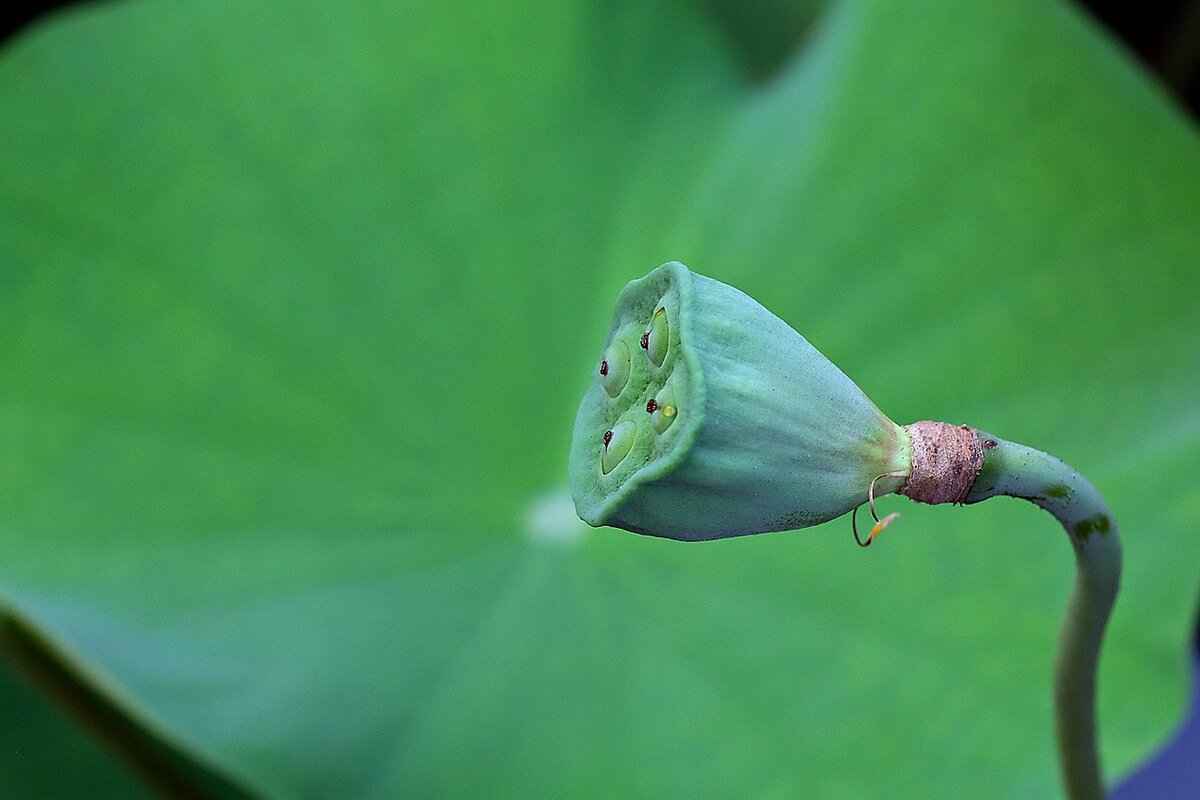
What Are Chia Seeds and Their Nutritional Benefits?
Chia seeds are often hailed as superfoods, and for good reason. These tiny black or white seeds come from the Salvia hispanica plant, native to Central America. They have gained immense popularity due to their impressive nutritional profile and numerous health benefits. But what exactly makes chia seeds a must-have in your diet?
Chia seeds are remarkably nutrient-dense, offering a wide array of health benefits. They are particularly rich in:
- Omega-3 Fatty Acids: Chia seeds are one of the best plant-based sources of omega-3 fatty acids, which are essential for heart health and brain function.
- Dietary Fiber: With about 10 grams of fiber per ounce, chia seeds promote digestive health, help regulate blood sugar levels, and keep you feeling full longer.
- Protein: Chia seeds contain approximately 4 grams of protein per ounce, making them an excellent addition to vegetarian and vegan diets.
- Minerals: They are loaded with important minerals such as calcium, magnesium, and phosphorus, which are vital for bone health.
- Antioxidants: Chia seeds are rich in antioxidants that help combat oxidative stress and reduce inflammation in the body.
In addition to these nutrients, chia seeds are incredibly versatile and can be easily incorporated into various meals. Their ability to absorb liquid and form a gel-like consistency makes them perfect for creating chia seed pudding, smoothies, and even baked goods.
The term superfood is often used to describe foods that provide exceptional health benefits. Chia seeds fit this description due to their high nutrient content and the following benefits:
- Weight Management: The fiber in chia seeds can help with weight control by promoting satiety.
- Heart Health: The omega-3 fatty acids contribute to lower cholesterol levels and improved cardiovascular health.
- Bone Health: The calcium and phosphorus in chia seeds support bone density and overall skeletal health.
Moreover, chia seeds are gluten-free, making them suitable for those with gluten sensitivities or celiac disease. Their neutral flavor allows them to blend seamlessly into both sweet and savory dishes, enhancing nutritional value without overpowering the taste.
Incorporating chia seeds into your daily routine is easy and can be done in several ways:
- Add them to your morning smoothie for an extra nutrient boost.
- Mix them into yogurt or oatmeal for added texture and nutrition.
- Use them as an egg substitute in vegan baking by mixing chia seeds with water.
- Create delicious chia seed pudding by soaking them in milk or a milk alternative overnight.
With their incredible health benefits and versatility, chia seeds are undoubtedly a valuable addition to any diet. Whether you are looking to improve your heart health, boost your fiber intake, or simply add a nutritious element to your meals, chia seeds can help you achieve your health goals.

Why Choose Chia Seed Pudding?
Chia seed pudding is not just a trendy dish; it is a nutritious powerhouse that can easily fit into anyone’s diet. This versatile dish can be enjoyed as a breakfast, a snack, or even a dessert. It is particularly appealing to those who are health-conscious and looking for a delicious way to incorporate more nutrients into their meals.
Chia seeds are often referred to as a superfood due to their impressive nutritional profile. They are loaded with:
- Omega-3 fatty acids: Essential for heart health.
- Fiber: Aids in digestion and helps maintain a healthy weight.
- Protein: Important for muscle repair and growth.
- Antioxidants: Help combat oxidative stress and inflammation.
Combining these seeds with your choice of milk and sweeteners creates a dish that not only tastes good but also supports your overall well-being.
One of the best things about chia seed pudding is its versatility. You can customize it in numerous ways to suit your taste preferences:
- Flavoring: Add vanilla extract, cocoa powder, or spices like cinnamon.
- Sweeteners: Use honey, maple syrup, or agave nectar for added sweetness.
- Toppings: Fresh fruits, nuts, or granola can enhance both flavor and texture.
Chia seed pudding is incredibly easy to prepare. Simply mix the chia seeds with your choice of liquid and let them sit to absorb the moisture. This no-cook method makes it a convenient option for anyone with a busy lifestyle. You can prepare several servings at once and store them in the refrigerator for quick access throughout the week.
Incorporating chia seed pudding into your diet can yield numerous benefits:
- Weight Management: The fiber content helps you feel full longer, reducing the urge to snack.
- Improved Digestion: The soluble fiber in chia seeds aids in digestion and promotes gut health.
- Heart Health: Omega-3 fatty acids are known to lower cholesterol levels and reduce the risk of heart disease.
By making chia seed pudding a regular part of your diet, you can enjoy these health benefits while satisfying your taste buds.
While chia seeds are generally safe for most people, it is advisable to consume them with adequate liquid to avoid digestive discomfort. Individuals with certain medical conditions or those taking medications should consult a healthcare provider before adding chia seeds to their diet.
In summary, chia seed pudding is a nutrient-dense, versatile dish that can easily be incorporated into various meals. Its ease of preparation and customization makes it an ideal choice for anyone looking to enhance their diet with healthy options.
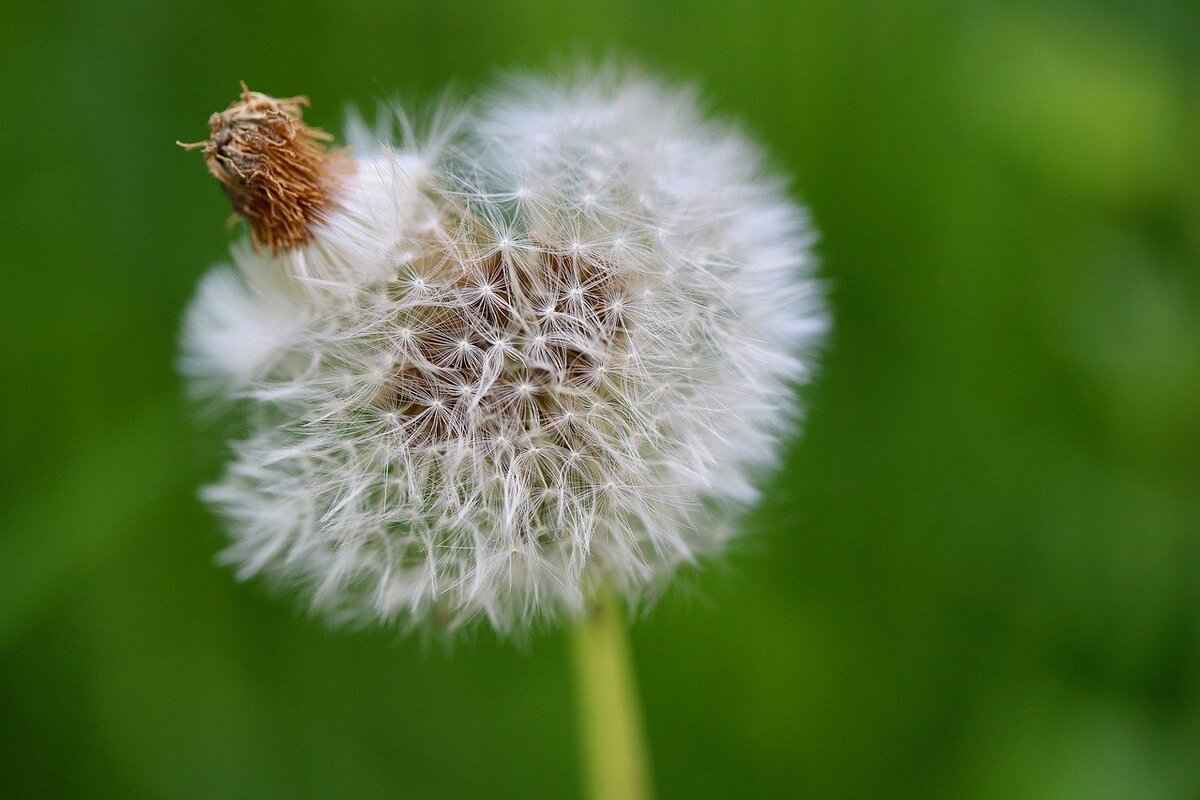
How to Prepare Basic Chia Seed Pudding?
Making basic chia seed pudding is not only simple but also requires minimal ingredients, making it an ideal choice for a nutritious snack or breakfast option. The classic recipe involves just chia seeds, milk, and a sweetener of your choice. This dish is incredibly versatile and can be customized according to your taste preferences.
To get started, you will need:
- Chia seeds: These tiny seeds are packed with nutrients and are the star ingredient of this pudding.
- Milk: You can use any type of milk, whether it’s dairy, almond, coconut, or oat milk.
- Sweetener: Choose from options like honey, maple syrup, or agave nectar to add sweetness.
Here’s a step-by-step guide to preparing your chia seed pudding:
1. In a mixing bowl, combine 1/4 cup of chia seeds with 1 cup of milk.2. Add your preferred sweetener, adjusting the amount to taste.3. Whisk the mixture thoroughly to ensure there are no clumps of chia seeds.4. Let the mixture sit for about 10 minutes, then stir again to prevent the seeds from settling at the bottom.5. Cover the bowl and refrigerate for at least 2 hours or overnight for the best texture.6. Once set, stir again and serve chilled. You can top it with fruits, nuts, or granola for added flavor and nutrition.
This basic chia seed pudding recipe can be modified in numerous ways. For instance, try adding vanilla extract for an aromatic flavor, or mix in cocoa powder for a chocolatey twist. The possibilities are endless!
Chia seed pudding not only satisfies your taste buds but also offers a plethora of health benefits. Rich in omega-3 fatty acids, fiber, and protein, it is an excellent choice for those looking to enhance their diet. Additionally, the high fiber content can aid in digestion and help keep you feeling full longer.
Another advantage of chia seed pudding is its ease of preparation. You can make a large batch and store it in the refrigerator, making it a convenient option for busy mornings or quick snacks. Just remember to store it in an airtight container to maintain its freshness.
In conclusion, preparing basic chia seed pudding is a straightforward process that opens the door to a world of culinary creativity. With just a few ingredients, you can whip up a delicious and nutritious treat that caters to your personal preferences. Whether you enjoy it plain or with exciting toppings, chia seed pudding is sure to become a staple in your kitchen.
Essential Ingredients for Chia Seed Pudding
Chia seed pudding has gained immense popularity as a healthy, versatile dish that can be enjoyed at any time of the day. The essential ingredients required to create this delightful treat are quite simple yet incredibly nutritious.
The primary ingredients for chia seed pudding include:
- Chia Seeds: These tiny seeds are the star of the dish, known for their ability to absorb liquid and expand, creating a thick, pudding-like texture. Chia seeds are rich in omega-3 fatty acids, fiber, and protein, making them a superfood that supports overall health.
- Milk: You can use any type of milk, whether it’s dairy or plant-based. Almond milk, coconut milk, and oat milk are popular choices that add unique flavors and nutrients. The milk not only hydrates the chia seeds but also contributes creaminess to the pudding.
- Sweeteners: To enhance the flavor of your chia seed pudding, consider adding sweeteners such as honey, maple syrup, or even agave nectar. These natural sweeteners can be adjusted to taste, allowing you to create a dessert that aligns with your personal preferences.
In addition to these basic components, you can incorporate additional flavors to elevate your chia seed pudding experience. Here are some popular options:
- Vanilla Extract: A splash of vanilla extract can add a warm, inviting aroma and flavor to your pudding.
- Cocoa Powder: For chocolate lovers, incorporating cocoa powder transforms your pudding into a decadent treat.
- Fruits: Fresh or frozen fruits such as berries, bananas, or mangoes can be mixed in or used as toppings, providing natural sweetness and vibrant colors.
When preparing your chia seed pudding, it’s essential to follow the right ratios to achieve the perfect consistency. A common guideline is to use three tablespoons of chia seeds for every one cup of liquid. After mixing the ingredients, allow the pudding to sit for at least 30 minutes (or overnight) to let the chia seeds absorb the liquid and swell.
Whether you’re looking for a nutritious breakfast, a satisfying snack, or a guilt-free dessert, chia seed pudding is a fantastic option. By experimenting with different ingredients and flavors, you can customize your pudding to suit your taste and dietary needs.
Remember, the beauty of chia seed pudding lies in its versatility. With just a few essential ingredients, you can create a dish that not only nourishes your body but also delights your taste buds.
Step-by-Step Preparation Guide
Chia seed pudding is a delightful and nutritious dish that has gained popularity for its simplicity and health benefits. Preparing this versatile treat is not only easy but also allows for endless customization. Below is a detailed step-by-step guide to ensure that your chia seed pudding turns out perfectly every time.
Creating a delicious chia seed pudding involves just a few simple steps. Follow this guide to achieve the ideal consistency and flavor:
- Gather Your Ingredients: Start by collecting the essential ingredients. You will need:
- 1/4 cup of chia seeds
- 1 cup of milk (dairy or plant-based)
- 1-2 tablespoons of sweetener (like honey, maple syrup, or agave)
- Optional: vanilla extract, cocoa powder, or fruit for flavoring
- Mix the Ingredients: In a mixing bowl or jar, combine the chia seeds, milk, and sweetener. Stir well to ensure the chia seeds are evenly distributed throughout the liquid. This is crucial for preventing clumping.
- Let It Sit: After mixing, allow the chia seed mixture to rest for about 5 minutes. This waiting period is essential as it gives the seeds time to absorb the liquid and swell, creating a gel-like consistency.
- Stir Again: After the initial resting period, stir the mixture again to break up any clumps that may have formed. This step ensures an even texture throughout the pudding.
- Refrigerate: Cover the bowl or jar with a lid or plastic wrap and place it in the refrigerator. Let the pudding chill for at least 2 hours, or overnight for the best results. The longer it sits, the thicker and creamier it will become.
- Serve and Enjoy: Once your chia seed pudding has reached the desired consistency, it’s time to serve. You can enjoy it plain or add toppings such as fresh fruits, nuts, or granola for added flavor and texture.
To enhance your chia seed pudding experience, consider the following tips:
- Experiment with Ratios: Adjust the chia seed to liquid ratio to find your preferred thickness. For a thicker pudding, use more chia seeds; for a thinner consistency, add more liquid.
- Flavor Infusions: Incorporate different flavors by adding spices like cinnamon or nutmeg, or blending in fruits before refrigeration.
- Storage: Store any leftovers in an airtight container in the refrigerator. Chia pudding can last up to five days, making it a great option for meal prep.
By following these steps and tips, you can create a delicious and nutritious chia seed pudding that suits your taste preferences. Enjoy experimenting with various flavors and toppings to make this dish your own!
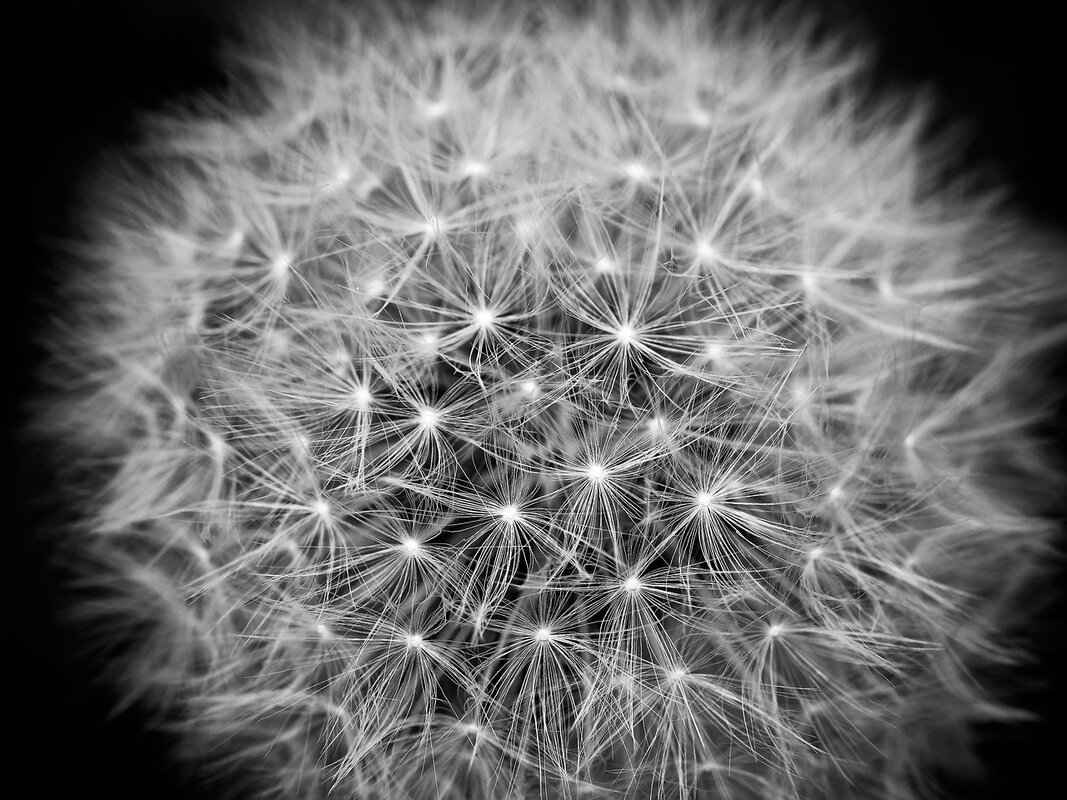
What Are Some Flavor Variations for Chia Seed Pudding?
Chia seed pudding is not only a nutritious option but also a blank canvas for your culinary creativity. The versatility of chia seeds allows for a multitude of flavor variations that can cater to every palate. Whether you have a sweet tooth or prefer something more savory, there’s a chia seed pudding recipe for you. Below, we explore some exciting flavor combinations that will elevate your chia seed pudding experience.
One of the simplest and most delightful ways to enhance your chia seed pudding is by incorporating fresh fruits. Here are some popular options:
- Berry Bliss: Combine chia seeds with almond milk and a medley of berries such as strawberries, blueberries, and raspberries. This combination not only adds natural sweetness but also a burst of antioxidants.
- Mango Madness: Blend ripe mango with coconut milk for a tropical twist. The creamy texture of the mango pairs beautifully with the chia seeds, creating a refreshing dessert.
- Banana & Cinnamon: Mash a ripe banana and mix it with chia seeds and your choice of milk. Adding a sprinkle of cinnamon enhances the flavor and provides additional health benefits.
If you’re a chocolate lover, this variation is sure to satisfy your cravings. By adding cocoa powder or melted dark chocolate to your basic chia seed pudding recipe, you can create a rich and indulgent treat. For an extra touch, consider mixing in:
- Nut Butter: Swirl in almond or peanut butter for a creamy texture and added protein.
- Chocolate Chips: Top with dark chocolate chips for a delightful crunch.
- Mint Extract: A few drops of mint extract can transform your chocolate pudding into a refreshing dessert.
For those looking to venture beyond traditional flavors, consider these unique combinations:
- Matcha Green Tea: Incorporate matcha powder into your chia seed pudding for a vibrant green color and a boost of antioxidants.
- Coconut & Lime: Mix coconut milk with lime zest and juice for a tropical flavor profile that’s both refreshing and zesty.
- Spiced Chai: Add chai spices such as cardamom, ginger, and cloves for a warm, aromatic pudding that’s perfect for colder months.
Chia seed pudding doesn’t have to be sweet. Try these savory variations for a unique twist:
- Herbed Avocado: Blend ripe avocado with chia seeds, vegetable broth, and herbs like cilantro or basil for a creamy, savory pudding.
- Tomato & Basil: Combine chia seeds with tomato puree and fresh basil for a refreshing appetizer or side dish.
With these flavor variations, chia seed pudding can easily be adapted to suit your taste preferences. Whether you enjoy sweet, fruity delights or savory options, the possibilities are endless. Experimenting with different ingredients not only makes your chia pudding exciting but also allows you to tailor it to your nutritional needs and cravings. So, grab your chia seeds and start creating delicious, customized puddings that will delight your taste buds!
Fruit-Infused Chia Seed Pudding Recipes
Chia seed pudding is not only a nutritious dish but also a delightful canvas for creativity in the kitchen. One of the most exciting ways to enhance this dish is by incorporating fruits. Fruits like berries, mango, and banana not only add natural sweetness but also introduce vibrant flavors and a burst of color to your pudding. This combination not only elevates the overall taste but also boosts the nutritional profile of your meal.
Fruits are nature’s candy, providing natural sugars that can help satisfy your sweet tooth without the need for refined sugars. When you mix fruits into your chia seed pudding, you are not just enhancing the flavor; you are also enriching it with essential vitamins, minerals, and antioxidants. For example:
- Berries are packed with antioxidants and vitamins C and K, making them a powerhouse of nutrition.
- Mango is rich in vitamin A and adds a tropical sweetness that can transport your taste buds to paradise.
- Bananas provide potassium and a creamy texture that blends beautifully with chia seeds.
Incorporating fruits into your chia seed pudding is simple and can be done in various ways:
- Layering: After preparing your basic chia seed pudding, layer it with fresh or pureed fruits in a glass. This not only looks appealing but also allows you to enjoy different flavors in each spoonful.
- Blending: For a smoother consistency, blend your fruits into a puree and mix it with the chia seed mixture. This method infuses the pudding with the fruit’s flavor and natural sweetness.
- Toppings: After your chia seed pudding has set, top it with sliced fruits. This adds texture and a fresh element to the dish.
Here are some delightful combinations that you can experiment with:
- Mixed Berry Medley: Combine blueberries, raspberries, and strawberries for a colorful and antioxidant-rich pudding.
- Mango Coconut Delight: Blend ripe mango with coconut milk for a tropical twist that is both refreshing and creamy.
- Banana Nut Crunch: Mash bananas into the pudding and top with chopped nuts for added crunch and flavor.
To ensure your fruit-infused chia seed pudding turns out perfectly every time, consider these tips:
- Use Ripe Fruits: The riper the fruit, the sweeter and more flavorful it will be. Choose fruits that are at their peak for the best results.
- Experiment with Textures: Combine smooth purees with chunky fruit pieces to create a delightful contrast in textures.
- Adjust Sweetness: Depending on the fruit used, you may want to adjust the sweetness of your pudding. Taste as you go!
By incorporating fruits like berries, mango, or banana into your chia seed pudding, you not only enhance the taste but also create a dish that is visually appealing and packed with nutrients. This simple addition transforms an already healthy meal into a delightful treat that can be enjoyed any time of the day.
Chocolate Chia Seed Pudding: A Decadent Treat
Chocolate Chia Seed Pudding is not just a dessert; it’s an experience that combines indulgence with health benefits. For those who adore chocolate, this recipe elevates the humble chia seed pudding into a rich and satisfying treat. By adding cocoa powder or melted chocolate, you can create a dessert that not only fulfills your sweet cravings but also provides nutritional value.
Chia seeds are renowned for their health benefits, including high levels of omega-3 fatty acids, fiber, and protein. When you incorporate chocolate, you enhance the flavor while still keeping the dish healthy. This pudding is perfect for breakfast, a midday snack, or even a guilt-free dessert.
- Chia Seeds: The base ingredient that provides a unique texture and numerous health benefits.
- Cocoa Powder or Melted Chocolate: Choose high-quality options for the best flavor.
- Milk: Any type works, whether dairy or plant-based.
- Sweetener: Honey, maple syrup, or agave syrup can be used to enhance sweetness.
1. In a bowl, combine 1/4 cup of chia seeds with 1 cup of your choice of milk.2. Add 2 tablespoons of cocoa powder or melted chocolate.3. Sweeten to taste with honey or maple syrup.4. Stir well to combine and prevent clumping.5. Let the mixture sit for about 10 minutes, then stir again.6. Cover and refrigerate for at least 2 hours or overnight for best results.
While the basic chocolate chia seed pudding is delicious on its own, you can experiment with various flavor additions to suit your palate:
- Nut Butters: Stir in almond or peanut butter for a creamy twist.
- Fruit: Add sliced bananas or berries for a fresh contrast.
- Spices: A pinch of cinnamon or vanilla extract can elevate the flavor profile.
This pudding is not just a treat; it’s also packed with health benefits. The chia seeds are an excellent source of fiber, which aids digestion and promotes a feeling of fullness. Additionally, the antioxidants found in cocoa can help combat free radicals in the body, contributing to overall health.
Yes, chocolate chia seed pudding can be stored in the refrigerator for up to five days. To maintain its freshness, it is best kept in an airtight container. This makes it a convenient option for meal prep, allowing you to enjoy a quick and healthy dessert or snack throughout the week.
For optimal taste and texture, it is recommended to consume the pudding within three days. However, it can last up to five days if stored properly. Always check for any changes in smell or texture before consuming.
While chia seeds are generally safe for most people, some may experience digestive issues if consumed in large quantities. It’s advisable to start with small portions and ensure adequate hydration, as chia seeds absorb liquid and expand.
Individuals with specific medical conditions or those taking certain medications should consult a healthcare provider before adding chia seeds to their diet. This ensures that they can enjoy the benefits without any adverse effects.
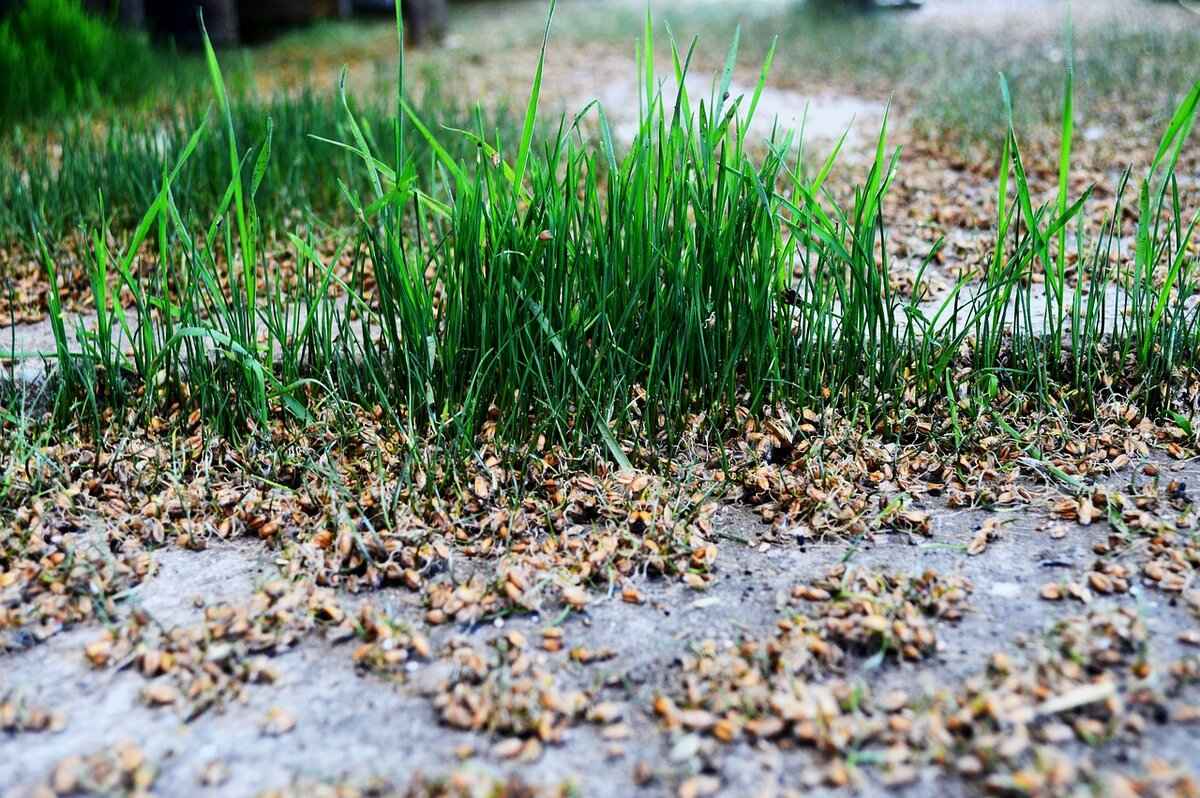
Can You Store Chia Seed Pudding?
Chia seed pudding has become a popular choice among health enthusiasts, and for good reason. This delightful dish is not only nutritious but also incredibly versatile. One of the most convenient aspects of chia seed pudding is its storage capability. Many people wonder, “Can you store chia seed pudding?” The answer is yes, and understanding how to store it properly can enhance your experience.
Chia seed pudding can be stored in the refrigerator for several days, making it an ideal option for those with busy lifestyles. Proper storage ensures that the pudding remains fresh and ready to enjoy whenever you need a quick meal or snack. This is particularly beneficial for individuals who prepare meals in advance or those who prefer having healthy options readily available.
To maintain the quality of your chia seed pudding, follow these best practices:
- Use Airtight Containers: Store your pudding in airtight containers to prevent exposure to air, which can lead to spoilage.
- Keep It Refrigerated: Always store chia seed pudding in the refrigerator. This helps to maintain its texture and flavor.
- Label and Date: If you make multiple batches, label each container with the date to keep track of freshness.
Generally, chia seed pudding can last up to five days in the refrigerator. However, for optimal taste and texture, it is recommended to consume it within three days. After this period, the pudding may still be safe to eat, but the quality might decline, affecting both flavor and consistency.
It’s essential to be aware of the signs of spoilage to ensure you are consuming safe food. Here are some indicators that your chia seed pudding may have gone bad:
- Off Smell: If the pudding emits an unpleasant or sour odor, it’s best to discard it.
- Change in Texture: A slimy or overly thick texture can indicate spoilage.
- Discoloration: Any unusual colors or mold growth means it’s time to throw it away.
To further extend the shelf life of your chia seed pudding, consider these additional tips:
- Keep Ingredients Separate: If you plan to add toppings like fruits or nuts, store them separately until you’re ready to eat. This prevents the pudding from becoming soggy.
- Use Fresh Ingredients: Always use fresh ingredients when preparing your pudding. This not only enhances flavor but also contributes to a longer shelf life.
In summary, chia seed pudding is not only a nutritious choice but also a convenient one, especially when it comes to storage. By following the proper storage techniques and being mindful of freshness, you can enjoy this delightful dish for several days without compromising on quality. So go ahead, whip up a batch of chia seed pudding, and relish the benefits of having a healthy treat on hand!
Best Practices for Storing Chia Seed Pudding
When it comes to enjoying the delightful and nutritious chia seed pudding, proper storage is key to maintaining its flavor and texture. This ensures that you can savor the pudding at its best, keeping it fresh and delicious. Below, we explore the effectively.
Chia seed pudding is not only a tasty treat but also a nutrient-dense option that can spoil if not stored correctly. Proper storage prevents spoilage and helps retain the pudding’s creamy consistency and rich flavor. When chia seeds absorb liquid, they expand, creating a gel-like texture that can be compromised if exposed to air or moisture.
One of the most effective ways to store chia seed pudding is to use airtight containers. These containers seal tightly, preventing air from entering and keeping the pudding fresh for an extended period. Glass jars or BPA-free plastic containers are excellent choices. Ensure the lid is secure to avoid any potential leaks or spills.
Storing your chia seed pudding in the refrigerator is essential. The cool temperature slows down bacterial growth, keeping your pudding safe to eat for several days. Aim to consume your pudding within three to five days for the best taste and texture. If you notice any changes in smell, color, or consistency, it’s best to discard it.
- Make Small Batches: If you are unsure how much pudding you will consume, consider making smaller batches. This way, you can enjoy it fresh without worrying about it going bad.
- Label Your Containers: When storing multiple flavors or batches, labeling your containers with the preparation date can help you keep track of freshness.
- Portion Control: If you plan to take your chia seed pudding on the go, consider portioning it into individual servings. This makes it easy to grab and enjoy whenever you like.
Yes, you can freeze chia seed pudding, but it’s essential to note that the texture may change upon thawing. If you decide to freeze it, use freezer-safe containers and consume it within a month for the best quality. Thaw it in the refrigerator overnight before consuming.
- Avoid Direct Sunlight: Keep your pudding away from direct sunlight, as heat can compromise its quality.
- Do Not Store at Room Temperature: Leaving chia seed pudding at room temperature for extended periods can lead to spoilage.
- Limit Exposure to Air: Always ensure that your container is sealed tightly after each use to minimize air exposure.
By following these best practices for storing chia seed pudding, you can enjoy this healthy treat at its best. Whether you prefer it as a breakfast option, a snack, or a dessert, proper storage will ensure that your chia seed pudding remains delicious and satisfying.
How Long Does Chia Seed Pudding Last?
Chia seed pudding has gained immense popularity as a nutritious and versatile dish, but one common question arises: Understanding the shelf life of this delightful treat is essential for anyone looking to enjoy it at its best.
Generally, chia seed pudding can last up to five days in the refrigerator. However, for the best taste and texture, consuming it within three days is recommended. This timeframe ensures that the pudding retains its creamy consistency and rich flavor.
- Ingredients Used: The type of milk and sweeteners can impact shelf life. For instance, using plant-based milks may result in a shorter lifespan compared to dairy options.
- Storage Conditions: Proper storage is crucial. Chia seed pudding should be kept in an airtight container to prevent exposure to air and moisture, which can lead to spoilage.
- Hygiene Practices: Always use clean utensils when serving to avoid introducing bacteria that can accelerate spoilage.
To ensure you’re consuming safe food, be on the lookout for signs that your chia seed pudding may have spoiled:
- Off Smell: If it emits a sour or unusual odor, it’s best to discard it.
- Texture Changes: A watery or excessively thick texture can indicate that it’s no longer good to eat.
- Mold Growth: Any visible mold is a clear sign that the pudding should be thrown away.
To maximize the freshness of your chia seed pudding, consider the following tips:
- Batch Preparation: Make smaller batches that can be consumed within a few days to ensure optimal freshness.
- Flavor Additions: If you plan to add fruits or other ingredients, do so just before serving to maintain the integrity of the pudding.
- Freezing Options: For longer storage, consider freezing portions of chia seed pudding. Thaw in the refrigerator before consumption.
In summary, while chia seed pudding can last up to five days in the fridge, the best flavor and texture are achieved within three days. By following proper storage techniques and being mindful of ingredient choices, you can enjoy this delicious and nutritious dish at its peak.
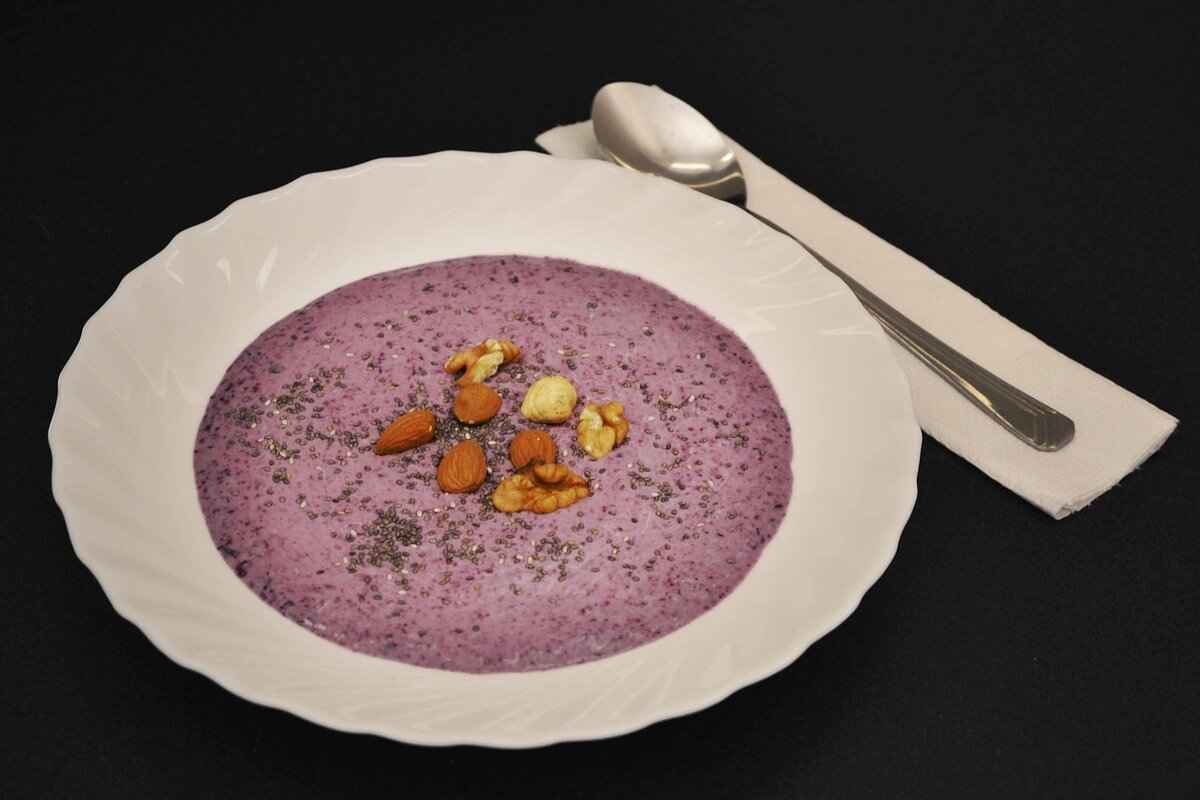
Are There Any Health Considerations with Chia Seeds?
Chia seeds have gained popularity in recent years as a superfood, known for their numerous health benefits. However, it is essential to consider any potential health implications associated with their consumption. This section will explore the health considerations related to chia seeds, including digestive issues and guidelines for safe consumption.
While chia seeds are generally safe for most people, some individuals may experience digestive discomfort. This discomfort can manifest as bloating, gas, or even constipation. Understanding the reasons behind these issues can help mitigate them effectively.
One of the primary factors contributing to digestive issues is the portion size. Chia seeds are highly concentrated in fiber, which can lead to discomfort if consumed in large quantities, especially for those who are not accustomed to a high-fiber diet. Starting with a small amount, such as one tablespoon, allows your body to adjust gradually. As you become more accustomed to fiber, you can slowly increase your intake.
Chia seeds can absorb up to 12 times their weight in liquid, forming a gel-like consistency. This property makes them excellent for hydration; however, it also means that they require adequate liquid to prevent digestive discomfort. It is crucial to consume chia seeds with sufficient water or other liquids, especially if you are eating them dry. This practice helps to avoid the seeds expanding in your digestive tract, which can lead to discomfort.
Individuals with certain medical conditions, such as irritable bowel syndrome (IBS) or those who are prone to gastrointestinal issues, should consult a healthcare provider before adding chia seeds to their diet. Additionally, those taking medications that affect digestion or absorption should also seek advice. It is always wise to discuss dietary changes with a healthcare professional, especially when introducing new foods.
Some people may experience sensitivity to chia seeds, which can result in symptoms such as stomach cramps, diarrhea, or allergic reactions. If you notice any adverse effects after consuming chia seeds, it is advisable to discontinue use and consult a healthcare professional.
- Start Slowly: Begin with a small amount and gradually increase as tolerated.
- Stay Hydrated: Always consume chia seeds with plenty of liquid to aid digestion.
- Mix with Other Foods: Incorporate chia seeds into smoothies, yogurt, or oatmeal to enhance texture and flavor while ensuring adequate moisture.
- Monitor Your Body’s Response: Pay attention to how your body reacts and adjust your intake accordingly.
In conclusion, while chia seeds offer numerous health benefits, it is essential to be mindful of potential digestive issues. By understanding portion sizes, ensuring proper hydration, and listening to your body, you can enjoy the nutritional advantages of chia seeds without discomfort. Always consult with a healthcare provider if you have concerns about incorporating chia seeds into your diet, especially if you have existing health conditions.
How to Avoid Digestive Issues with Chia Seeds
When incorporating chia seeds into your diet, it’s essential to be mindful of how they interact with your digestive system. These tiny seeds are packed with nutrients, but they can also lead to discomfort if not consumed properly. Here are some effective strategies to help you avoid any digestive issues while enjoying the many benefits of chia seeds.
Chia seeds absorb a significant amount of liquid, expanding up to ten times their size when soaked. This property can be beneficial, but it also means that consuming them without enough liquid can lead to digestive discomfort. To prevent this, always ensure you mix chia seeds with an adequate amount of liquid, such as water, milk, or a plant-based alternative. A good rule of thumb is to use 1 part chia seeds to 4 parts liquid. This ratio helps create a gel-like consistency that is easier for your body to digest.
For those new to chia seeds, it’s advisable to start with small portions. Begin with 1 tablespoon of chia seeds mixed with your chosen liquid. Gradually increase the amount as your body adjusts to the increased fiber intake. This slow introduction allows your digestive system to adapt without overwhelming it.
Chia seeds are an excellent source of dietary fiber, which is crucial for digestive health. However, too much fiber too quickly can lead to bloating, gas, and discomfort. If you’re not used to a high-fiber diet, consider balancing your chia seed consumption with other fiber sources, such as fruits and vegetables, to help your body adjust.
Soaking chia seeds before consumption is one of the best practices to enhance digestibility. When soaked, chia seeds swell and form a gel, making them easier to digest. This process not only improves their texture but also helps in nutrient absorption. Aim to soak the seeds for at least 30 minutes or overnight for optimal results.
Everyone’s digestive system is unique, so it’s essential to pay attention to how your body reacts after consuming chia seeds. If you experience any discomfort, consider adjusting the amount you consume or the method of preparation. Keeping a food diary can help identify any patterns or triggers related to your digestive health.
If you have underlying health conditions or are taking medications that affect digestion, it’s wise to consult with a healthcare professional before adding chia seeds to your diet. They can provide personalized advice and help you determine the appropriate portion sizes based on your individual health needs.
Incorporating chia seeds into your diet can be a rewarding experience, offering numerous health benefits. By following these practical tips—hydrating adequately, starting with small portions, soaking the seeds, and listening to your body—you can enjoy chia seeds without the worry of digestive issues. Remember, moderation is key, and understanding your body’s responses will help you make the most of this nutritious superfood.
Who Should Avoid Chia Seeds?
Chia seeds are often hailed as a superfood due to their rich nutrient profile and health benefits. However, not everyone may be able to enjoy them without precautions. It is crucial for certain individuals to be aware of potential risks associated with chia seeds, particularly those with specific medical conditions or those taking certain medications.
Consult Your Healthcare Provider
Before adding chia seeds to your diet, individuals with specific health conditions should consult with a healthcare provider. This is especially important for:
- People with Digestive Disorders: Chia seeds are high in fiber, which can be beneficial for many, but for those with irritable bowel syndrome (IBS) or other digestive issues, excessive fiber can lead to discomfort.
- Individuals on Blood Thinners: Chia seeds may have a blood-thinning effect due to their omega-3 fatty acid content. If you are taking anticoagulant medications, it’s advisable to discuss this with your doctor.
- Diabetics: While chia seeds can help stabilize blood sugar levels, they can also interact with diabetes medications. Monitoring blood sugar levels closely is essential.
- Pregnant and Breastfeeding Women: Although chia seeds are nutritious, pregnant or breastfeeding women should seek medical advice before incorporating them into their diet to ensure they meet their unique nutritional needs.
Allergic Reactions
Some individuals may experience allergic reactions to chia seeds. Symptoms can range from mild to severe, including itching, hives, or gastrointestinal distress. If you have a known allergy to other seeds, it’s wise to approach chia seeds with caution.
Hydration is Key
Chia seeds can absorb up to 12 times their weight in water, which can lead to potential choking hazards if consumed dry. It’s important to soak chia seeds in liquid before consumption and to ensure adequate hydration throughout the day.
Portion Control
Starting with small amounts of chia seeds is advisable for anyone new to them. This approach allows the body to adjust to the increased fiber intake, minimizing the risk of digestive discomfort. A typical serving size is about 1-2 tablespoons of chia seeds, mixed with sufficient liquid.
Conclusion
While chia seeds offer numerous health benefits, they are not suitable for everyone. Individuals with specific medical conditions or those on particular medications should consult with their healthcare provider before incorporating chia seeds into their diet. By taking these precautions, you can enjoy the nutritional benefits of chia seeds safely.
Frequently Asked Questions
- What is chia seed pudding?
Chia seed pudding is a nutritious dish made by soaking chia seeds in liquid, typically milk or a milk alternative, until they absorb the liquid and form a gel-like consistency. It’s a versatile option for breakfast, snacks, or desserts!
- Can I use any type of milk for chia seed pudding?
Absolutely! You can use dairy milk, almond milk, coconut milk, or any plant-based milk you prefer. Each type will give a unique flavor and texture to your pudding.
- How do I know if my chia seed pudding is ready?
Your chia seed pudding is ready when it has thickened and the chia seeds have expanded, usually after about 2-4 hours in the fridge. It should have a creamy, gel-like texture!
- Can I customize my chia seed pudding?
Definitely! You can add flavors like vanilla, cocoa powder, or spices, and mix in fruits, nuts, or sweeteners to create your perfect pudding. The possibilities are endless!
- How long can I store chia seed pudding?
Chia seed pudding can last up to five days in the refrigerator. For the best taste and texture, it’s recommended to enjoy it within three days.


